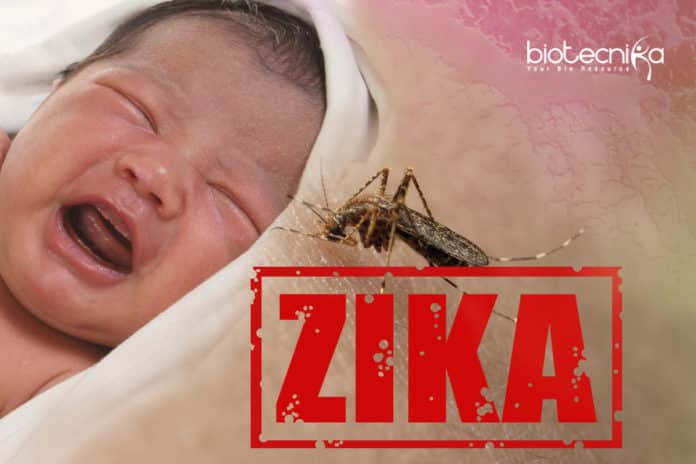Zika Virus Spreads Silently
A team of scientists at Scripps Research, working in collaboration with several other organizations, uncovered the hidden outbreak of Zika Virus by overlaying air-travel patterns with genomic sequencing of virus samples from infected travelers.
Kristian Andersen, Ph.D. said that Infectious diseases such as Zika are global problems, and greater international collaboration and coordination is a key if scientists have to stay ahead of global outbreak threats. He is an associate professor at Scripps Research and director of Infectious Disease Genomics at the Scripps Research Translational Institute. He further added that through this study, scientists developed a framework for a more global and efficient way of understanding how viruses are spreading across the globe. The traditional reliance on local testing may not always be sufficient to generate the exact data.
The study highlights that the Zika Virus had already been circulating for at least a year before its discovery in 2015, making its way to more than 40 countries. Zika emerged from a little-known virus to a source of global panic has the potential to cause Microcephaly– a condition in babies born to women who contracted Zika during pregnancy.
A coordinated response to Zika relied upon countries
detecting the virus outbreaks and reporting them to international health agencies. By the end of 2016, data from the health agencies suggested that the epidemic was nearing its end. The virus subsequently fell off from the list of the World Health Organization’s “Public Health Emergency of International Concern.”However, Andersen and his researchers found that an undetected outbreak was reaching its peak in Cuba unnoticed by the international health agencies. Surprisingly, the explosion was not found in other Caribbean countries, likely due to an aggressive mosquito-control campaign that delayed the disease’s emergence. The researchers found that other infectious diseases spread by Aedes aegypti mosquitoes, including dengue, also were absent in Cuba at the same time.
Andersen’s team had no clue that it would expose an unnoticed outbreak when it began investigating travel-associated Zika cases in 2017. The scientists wanted to know if the Ebola epidemic was winding down. Instead, they were shocked to find that a steady number of travelers from the Caribbean were still contracting the virus. The approach used in this study is known as “genomic epidemiology.” The team devised a way to calculate local prevalence by obtaining blood samples from infected travelers who had visited Cuba. Later, using genomic sequencing, they reconstructed virus ancestry and outbreak dynamics.
Karthik Gangavarapu, a Scripps Research graduate student in Andersen’s lab and one of three co-first authors of the study, says the Zika viruses from the epidemic in the Americas descended from a single ancestor, which allowed the team to create a “family tree”. This further helped the researchers trace the roots of the Ebola Virus.
By examining small genomic changes in each Ebola virus sample, Gangavarapu was able to find a “clock rate” to reveal the age of the virus. The timeline determined that the outbreak in Cuba was established a year later than other epidemics in the Caribbean. Gangavarapu says that the scientists realized there was a whole outbreak that had gone undetected.
Sharada Saraf, an intern in the Andersen lab and co-first author of the research, analyzed the data from airline travel schedules, flight patterns, and cruise ship destinations. With the help of this data, the scientists were able to find how many people visited Cuba and other Zika-endemic countries during a particular period.
Saraf says that undetected viral outbreaks have the potential to spread globally, and she hopes that this study will encourage utilizing both travel surveillance and genomic data in combination with local reporting for future surveillance efforts. Saraf also pointed out that Andersen’s Lab had consolidated the health data in an easily downloadable and usable format, and made it publicly available on their lab website for anyone to use as soon as it was generated.
Similarly, Andersen’s Lab made its Zika virus sequence data available, highlighting a new framework for how data can be openly shared during public health emergencies.
How to Prevent The Next Zika Virus Outbreak? Zika Virus Spreads Silently
Scientists of this study believe that Public health organizations and academic labs must step up their information-sharing practices. With better detection technologies and improved government funding from various organizations for activities such as mosquito surveillance, could help control future outbreaks.
He further says that many serious diseases were linked to fluctuations in mosquito populations. This type of data isn’t being collected or made available publicly in most places in the world.
Gangavarapu notes that the implications of his team’s method of combining travel surveillance with genomic epidemiology go far beyond this study. He added that the study method followed by Andersen’s team could be applied to many countries that may not have the capacity to detect diseases or may have reliable reporting issues.






























